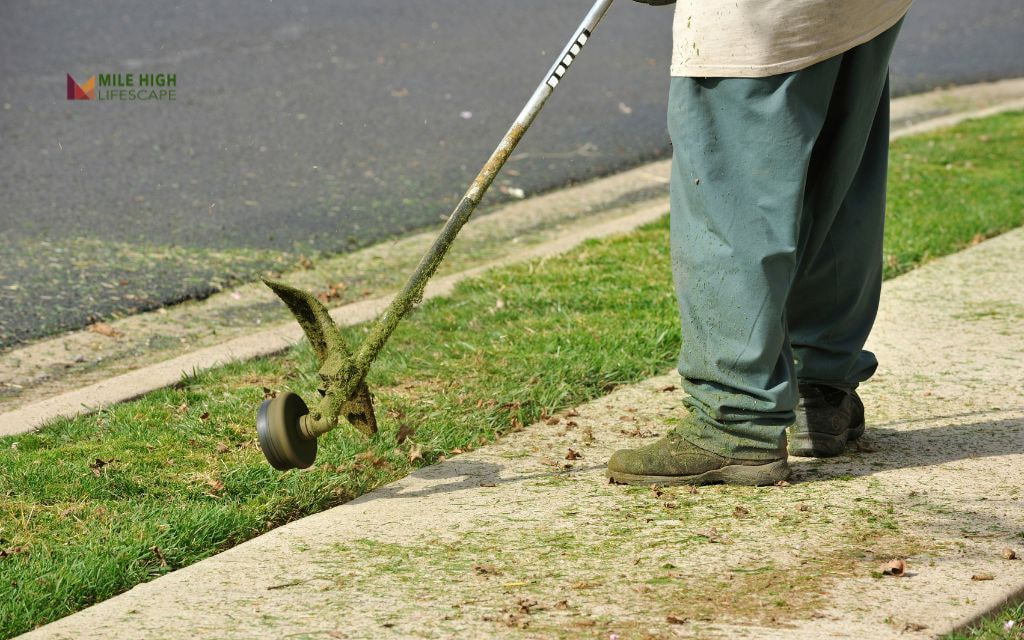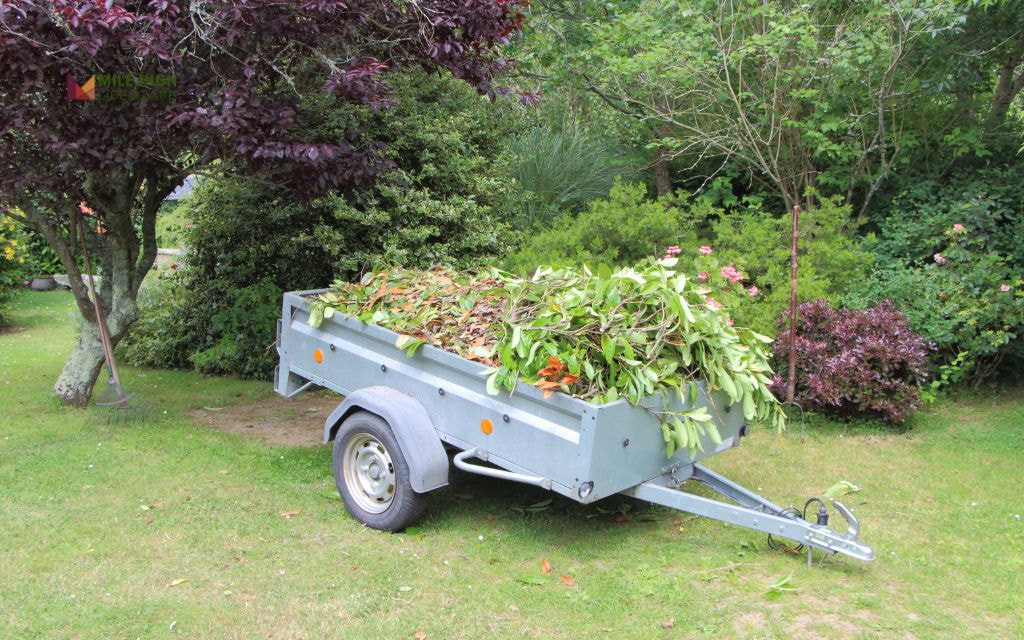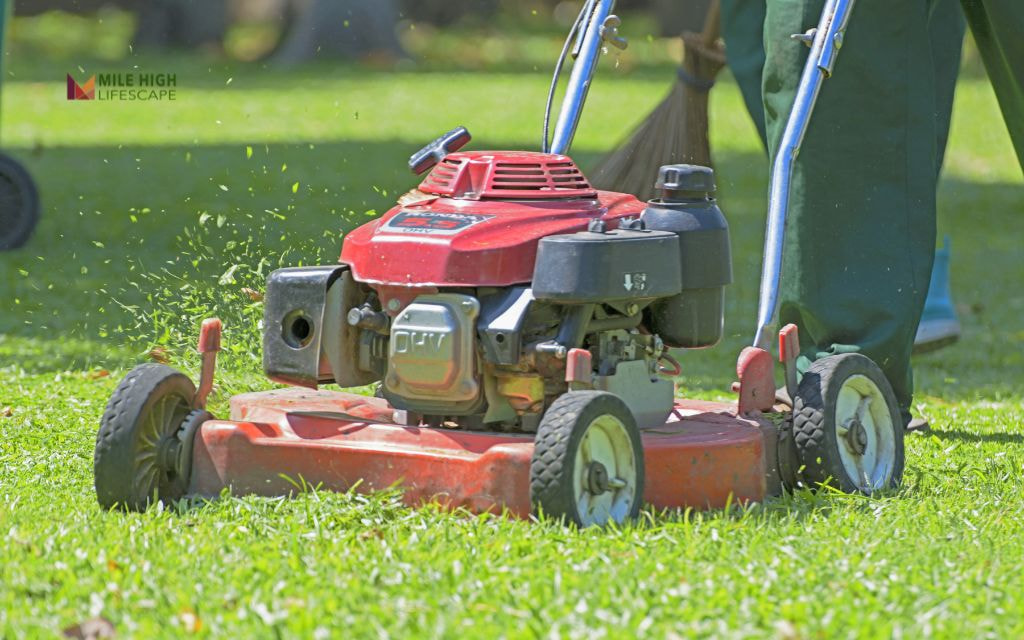How long does it take to mow lawn? Mowing a lawn typically takes 30-90 minutes for average suburban properties, depending on size, mower type, and terrain conditions.
This time investment represents the most underestimated aspect of lawn maintenance, with many homeowners discovering the task consumes significantly more of their weekend than anticipated.
Understanding your specific mowing time helps you plan maintenance schedules effectively, recognize factors that slow progress, and make informed decisions about whether professional services might better serve your needs.
What Impacts How Long It Takes to Mow a Lawn?
Multiple variables dictate the duration of lawn mowing sessions. Recognizing these factors helps set realistic expectations and improve efficiency:
- Lawn size stands as the primary determinant of mowing time. A standard quarter-acre lot requires substantially more time than a small urban yard.
- Mower type directly affects speed and coverage. Push mowers operate at slower speeds (1-3 mph) while riding mowers can maintain 4-6 mph with wider cutting paths.
- Grass height and density impact cutting resistance. Taller grass creates greater drag on the mower engine, necessitating slower speeds or multiple passes.
- Obstacles and terrain require navigation and reduce straight-line efficiency. Trees, garden beds, and slopes force frequent direction changes and careful maneuvering.
- Mower deck width determines coverage per pass. A wider deck covers more ground with each pass but may struggle with tight spaces.
- Skill and experience in pattern selection can reduce total distance traveled. Efficient mowing patterns eliminate wasted movement and minimize overlap.
- Soil and moisture conditions affect traction and maneuverability. Denver’s clay soils retain moisture longer, creating slippery conditions that demand slower speeds.
Additional time factors include:
- Overlap and turning requirements between passes add 15-20% to total mowing time
- Weather conditions such as heat or wind that necessitate breaks or slower pace
- Mower readiness including fuel levels, battery charge, and blade sharpness
How Long Does It Take To Mow Lawn: Estimate by Mower Type
Different mower types operate at varying speeds and efficiency levels, creating significant differences in time investment:
| Mower Type | Speed (mph) | Area/Hour | Best For |
| Manual Push | 1–1.5 | ~4,000–7,000 sq ft/hr | Small, flat lawns |
| Gas Push | 2–3 | ~8,000–12,000 sq ft/hr | Medium suburban lawns |
| Riding Mower | 4–6 | 1–2 acres/hr | Large/flat properties |
| Robotic | 0.5–1 | Continuous but slow | Set-it-and-forget-it |
- Manual push mowers excel in small urban spaces but require significant physical effort. Their narrower cutting width and slower operating speed make them impractical for larger properties.
- Gas-powered push mowers balance maneuverability with reasonable speed, making them the standard choice for most Denver suburban homes. Their moderate deck width navigates obstacles while covering medium-sized lawns efficiently.
- Riding mowers transform larger properties from day-long projects to manageable tasks. Their wider decks and faster operation speeds cut time requirements by 50-75% compared to push mowers on the same terrain.
- Robotic mowers operate continuously but slowly, providing “set and forget” convenience. Their true benefit comes from eliminating your active involvement rather than reducing total operation time.

Denver Lawn Sizes & How They Affect Mowing Time
Denver properties feature distinct characteristics that influence mowing duration across different neighborhood types:
Urban Yards (1,500–3,000 sq ft)
These compact spaces typically require 30–45 minutes with a standard push mower. While smaller in area, urban yards often present navigation challenges with tight corners, multiple obstacles, and limited maneuvering space. Older Denver neighborhoods feature these smaller, more intricate yards.
Suburban Lots (5,000–10,000 sq ft)
Most Denver suburban homes fall within this range, requiring 45–90 minutes of mowing time with a push mower. These medium-sized properties balance open areas with landscaping features, creating a mix of straight runs and obstacle navigation.
Foothill/Acreage Properties (>10,000 sq ft)
Larger properties in outlying areas or foothills demand 90+ minutes of mowing time. These yards frequently include terrain variations that reduce efficiency. Elevation changes in western Denver neighborhoods introduce slopes that significantly extend mowing duration.
Denver-specific considerations include the prevalence of slopes in South Denver and foothill areas, where uneven terrain reduces traction and requires careful maneuvering. Additionally, the region’s clay soil composition tends to retain moisture longer after rainfall, creating periodic wet conditions that necessitate slower mowing speeds.

Use This Formula to Calculate Your Mowing Time
For a personalized estimate, apply this practical calculation method to how long does it take to mow lawn:
Formula: Mowing Time (minutes) = (Lawn Area ÷ Mower Width ÷ Speed × 60) × 1.15
The 1.15 multiplier accounts for necessary overlap between passes and turning time at the end of each row.
Steps To Calculate Your Specific Mowing Time
- Measure your lawn area in square feet (length × width for rectangular sections)
- Convert your mower’s cutting width from inches to feet (divide by 12)
- Estimate your average mowing speed based on mower type (see table above)
- Apply the formula to determine approximate minutes
Example Calculation
For a typical Denver suburban lawn of 6,000 square feet using a standard 21-inch gas push mower at 2.5 mph:
- Lawn area = 6,000 square feet
- Mower width = 21 inches ÷ 12 = 1.75 feet
- Mowing speed = 2.5 mph
- Mowing Time = (6,000 ÷ 1.75 ÷ 2.5 × 60) × 1.15 = (1,371.43 × 60) × 1.15 = 82,285.8 × 1.15 = 94,628.67 seconds = 82.3 minutes
This calculation indicates approximately 80-90 minutes of active mowing time for this property.
What Slows You Down the Most? Time-wasting Factors
Several common factors significantly extend mowing duration beyond basic calculations:
- Lawn clutter including toys, hoses, and temporary items requires stopping to move objects. Pre-mowing cleanup saves substantial time compared to handling obstacles during the mowing process.
- Inefficient mowing patterns create unnecessary overlap and missed sections. Random approaches force retracing and double-cutting areas, while structured patterns maximize efficiency.
- Dull mower blades fail to cut cleanly, requiring multiple passes over the same grass. Sharp blades provide clean single-pass cuts that maintain consistent speed.
- Overgrown grass creates excessive resistance and clogs mower decks. Tall grass forces slower speeds and frequent stops to clear buildup from the undercarriage.
- Wet grass increases weight and sticking, extending mowing time by 25-50%. Damp conditions from morning dew or recent rain dramatically reduce efficiency.
- Denver hills and rocky sections demand careful navigation and reduced speed. The elevation changes common in many Denver neighborhoods introduce traction challenges.
Pro Tip: Implementing a perimeter-first mowing pattern and alternating directions weekly can reduce your total mowing time by up to 20%. This technique establishes clear boundaries for turning and minimizes missed sections.

DIY vs. Professional Mowing: Time Comparison
Consider how long does it take to mow lawn when comparing DIY and professional approaches:
| Task | DIY Time | Pro Crew Time |
| Setup & Prep | 10–15 min | 0 min |
| Mowing (avg. lawn) | 45–90 min | 20–30 min |
| Edging & Cleanup | 15–25 min | Included |
| Total Time Invested | 70–120 min | ~30 min |
Professional crews like Mile High Lifescape bring significant advantages that reduce time requirements.
Their equipment includes commercial-grade mowers with wider cutting paths, professionally sharpened blades that maintain optimal cutting efficiency, and coordinated teams that handle different aspects simultaneously.
Additionally, professional services eliminate your personal time investment in equipment maintenance, blade sharpening, and fuel management.
Should You Outsource Lawn Mowing? Pros and Cons
The decision to handle mowing yourself or hire professionals depends on how you value your time and lawn appearance.
Professional lawn care extends beyond faster mowing – it encompasses consistent maintenance, proper seasonal techniques, and specialized knowledge of Denver’s unique grass and soil conditions.
Pros of Hiring a Professional:
- Saves 1–2 hours of active lawn maintenance weekly
- Eliminates equipment maintenance, blade sharpening, and fuel management
- Ensures professional-quality results with every service
- Provides scheduling flexibility with guaranteed service windows
Cons to Consider:
- Involves service costs (though potentially offset by equipment and time savings)
- Reduces direct control for lawn enthusiasts who enjoy hands-on maintenance
The value proposition becomes clearer for properties with challenging features like Denver’s slopes, larger lot sizes, or homeowners with demanding schedules.
Under these circumstances, the investment in professional services often provides substantial returns in both time savings and lawn quality.
Conclusion
You now possess the tools to accurately estimate your lawn mowing time requirements and evaluate whether the investment aligns with your priorities. The calculations and factors we’ve explored provide a framework for making informed decisions about lawn maintenance.
For Denver homeowners balancing busy schedules against the demands of sloped yards or larger properties, Mile High Lifescape offers a solution that eliminates guesswork and reclaims weekend hours. Our professional crews handle the details while you focus on enjoying your outdoor space rather than maintaining it.
Contact Mile High Lifescape now at (303) 877-9091.
Frequently Asked Questions (FAQs)
How long does it take to mow 1/4 acre lawn with a push mower?
Approximately 60–75 minutes using a standard gas push mower on flat terrain. Hilly areas or obstacles may extend this to 90+ minutes.
How fast can I mow a half-acre with a riding mower?
A riding mower typically completes a half-acre in 30–45 minutes depending on the terrain complexity and mower deck width.
Does mowing time increase on uneven Denver lawns?
Yes, properties in South Denver or foothill areas with slopes require 20-30% more time due to reduced traction and safety considerations.
How much time should I set aside to mow my lawn?
Allow for the calculated mowing time plus 20-30 minutes for setup, edging, and cleanup to ensure a complete maintenance session.
Does mulching instead of bagging reduce mowing time?
Yes, bagging adds approximately 15-20% to total mowing time due to emptying requirements and slower operating speeds.
What’s the best mowing speed for quality results?
Maintaining a moderate pace (2-3 mph for push mowers) improves cut quality. Rushing creates missed sections and uneven cutting, often requiring rework.
Do robotic mowers truly save time?
Robotic mowers eliminate your active involvement but operate continuously at slower speeds. They excel for homeowners prioritizing convenience over speed.
What’s the most efficient mowing pattern?
A perimeter-first approach followed by back-and-forth rows creates the most efficient pattern, minimizing turns and eliminating missed sections.
